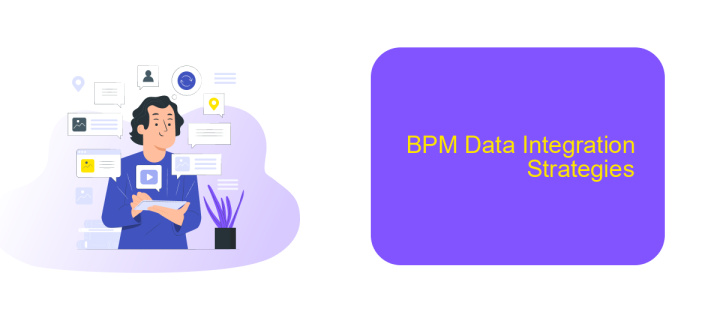BPM Data Integration
Business Process Management (BPM) Data Integration is a critical aspect of modern enterprise operations, enabling seamless connectivity between various systems and processes. By integrating data across platforms, organizations can enhance efficiency, improve decision-making, and ensure real-time insights. This article explores the key components, benefits, and best practices of BPM Data Integration, providing a comprehensive guide for businesses aiming to optimize their workflows.
Introduction
Business Process Management (BPM) Data Integration is a critical aspect of modern enterprises, enabling seamless data flow and process automation across various systems. Effective data integration ensures that organizations can optimize their workflows, improve decision-making, and enhance overall operational efficiency. As businesses continue to evolve, the need for robust BPM data integration solutions becomes increasingly apparent.
- Streamlines data across multiple platforms
- Enhances process automation and efficiency
- Facilitates improved decision-making
- Ensures data consistency and accuracy
- Reduces manual intervention and errors
One of the leading tools for achieving efficient BPM data integration is ApiX-Drive. This service allows businesses to automate data exchange between various applications without requiring extensive coding knowledge. By leveraging ApiX-Drive, organizations can set up integrations quickly and maintain seamless data flow, ultimately driving productivity and growth. As a result, BPM data integration becomes not only a technical necessity but a strategic advantage in today's competitive landscape.
Data Integration Challenges in BPM

Data integration in Business Process Management (BPM) presents several challenges, primarily due to the diverse and complex nature of data sources. Organizations often deal with multiple systems and applications, each with its own data formats and protocols. This heterogeneity makes it difficult to achieve seamless data flow, leading to potential data inconsistencies and inefficiencies. Moreover, ensuring data security and compliance with regulations adds another layer of complexity, as sensitive information must be protected during transmission and storage.
Another significant challenge is the real-time integration of data. BPM systems require up-to-date information to make accurate decisions and optimize processes. However, integrating data in real-time from various sources can be resource-intensive and technically demanding. Tools like ApiX-Drive can simplify this process by providing a platform for automating data transfers between different applications. ApiX-Drive supports a wide range of integrations, allowing businesses to streamline their workflows without extensive coding or manual intervention. This not only enhances efficiency but also reduces the risk of errors associated with manual data handling.
Benefits of BPM Data Integration

BPM Data Integration offers a multitude of benefits that can significantly enhance business processes. By integrating data from various sources into a unified system, organizations can streamline operations, improve decision-making, and enhance overall efficiency.
- Improved Data Accuracy: Centralized data integration reduces errors and inconsistencies, ensuring that all departments work with the same accurate information.
- Enhanced Collaboration: With integrated data, teams can collaborate more effectively, sharing insights and making informed decisions faster.
- Increased Efficiency: Automated data flows eliminate the need for manual data entry, saving time and reducing the risk of human error.
- Better Customer Insights: By consolidating customer data, businesses can gain deeper insights into customer behavior and preferences, enabling more personalized marketing strategies.
- Scalability: BPM data integration solutions like ApiX-Drive allow businesses to easily scale their operations and integrate new data sources without significant disruptions.
Incorporating BPM Data Integration into your organization not only enhances operational efficiency but also provides a competitive edge by enabling more agile and informed decision-making. Tools like ApiX-Drive simplify the integration process, making it accessible for businesses of all sizes to harness the full potential of their data.
BPM Data Integration Strategies

Effective BPM data integration strategies are essential for ensuring seamless communication between various business processes and systems. These strategies help organizations streamline operations, reduce redundancies, and improve overall efficiency. The integration process involves consolidating data from multiple sources, transforming it into a consistent format, and ensuring it is accessible to all relevant stakeholders.
One of the key components of a successful BPM data integration strategy is choosing the right tools and platforms. ApiX-Drive, for instance, offers a range of features that facilitate the integration of various applications and services without requiring extensive coding knowledge. By leveraging such tools, organizations can automate data flows and ensure real-time updates across different systems.
- Identify and prioritize integration needs.
- Select appropriate integration tools like ApiX-Drive.
- Ensure data consistency and quality.
- Implement robust monitoring and maintenance routines.
By following these strategies, businesses can achieve a higher level of operational efficiency and adaptability. Proper BPM data integration not only enhances data accuracy but also supports better decision-making and strategic planning. Consequently, organizations can respond more effectively to market changes and customer demands.


Conclusion
In conclusion, BPM data integration is a critical component for enhancing business processes and ensuring seamless data flow across various systems. By leveraging advanced integration tools, organizations can achieve greater efficiency, reduce manual errors, and make more informed decisions. The ability to integrate disparate data sources into a cohesive system allows for real-time data analysis and improved operational agility.
One such tool that facilitates effective BPM data integration is ApiX-Drive. This service simplifies the process of connecting different applications and automating workflows, making it easier for businesses to manage their data. With ApiX-Drive, users can set up integrations without needing extensive technical expertise, thereby accelerating the implementation process and driving quicker results. Ultimately, adopting robust data integration solutions like ApiX-Drive can significantly enhance the overall performance and scalability of business operations.
FAQ
What is BPM Data Integration?
Why is BPM Data Integration important?
How can I implement BPM Data Integration in my organization?
What are the common challenges in BPM Data Integration?
How can I ensure data security during BPM Data Integration?
Strive to take your business to the next level, achieve your goals faster and more efficiently? Apix-Drive is your reliable assistant for these tasks. An online service and application connector will help you automate key business processes and get rid of the routine. You and your employees will free up time for important core tasks. Try Apix-Drive features for free to see the effectiveness of the online connector for yourself.

